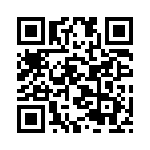 TCF 553-001 Seminar in Telecommunication
TCF 553-001 Seminar in TelecommunicationHumor in American Television
Spring 2014
http://goo.gl/MQBd0c
 TCF 553-001 Seminar in Telecommunication
TCF 553-001 Seminar in TelecommunicationTHIS OUTLINE IS SUBJECT TO CHANGES ANNOUNCED IN CLASS
![]() = illustrations |
= illustrations | ![]() = Screenpedia |
= Screenpedia | ![]() = Internet Archive |
= Internet Archive | ![]() = YouTube |
= YouTube | ![]() = Netflix streaming
= Netflix streaming
| Date | Topic/Screening | Readings |
|---|---|---|
| 1/14 | Introduction to Course TV Comedy's Antecedents: Radio Comedies Yoo-Hoo, Mrs. Goldberg (Kempner, 2009) |
|
| 1/21 | Conventions of the Genre South Park (1997-) Frasier (1993–2004) The Beverly Hillbillies (1962-71) Theories of Humor Videos Liberty (1929) The Finishing Touch (1928) Recommended: Amos 'n' Andy (radio, 1928-43; TV, 1951-53) The Goldbergs (radio, 1929-46; TV, 1949-56) |
Dalton & Linder, Part 1 (15-46);
Feuer (138-160); Bull (47-79) |
| 1/28 | Snowpocalypse! | |
| 2/4 | Theories of Humor Reframing the Family Videos The Adventures of Ozzie and Harriet (1952–66) Leave It to Beaver (1957–1963) The Andy Griffith Show (1960–68) The Osbournes (2002–2005) |
Mills, "Introduction" (1-24); Palmer (19-58); IEP, "Humor" (1-10) Recommended: Carey (vii-xxviii) |
| Reframing the Family Gender Represented Videos I Love Lucy (1951-57) Our Miss Brooks (radio, 1948-57; TV, 1952-56) Sex and the City (1998-2004) Roseanne (1988–97) |
Dalton & Linder, Part 2 (49-84); Haralovich (61-83) |
|
| 2/18 | Gender Represented Race and Ethnicity Videos Amos 'n' Andy (radio, 1928-43; TV, 1951-53) For Your Love (1998-2002) Julia (1968-71) Girlfriends (2000-08) |
Student-led discussion (Brad): Dalton & Linder, Part 3 (87-122); Rowe (408-419) |
| 2/25 | Race and Ethnicity Work and Social Class Videos The Doris Day Show (1968-73) The Dick Van Dyke Show (1961-66) The Mary Tyler Moore Show (1970-77) |
Student-led discussion (Rebecca): Dalton & Linder, Part 4 (125-162); Smith-Shomade (24-68) |
| 3/4 | Work and Social Class Implications of Ideology Videos Ally McBeal (1997-2002) Sex and the City (1998-2004) Cheers (1982-93) The Simpsons (1989-) |
Student-led discussion (Brittany): Dalton & Linder, Part 6 (205-238) |
| 3/11 | Implications of Ideology The Televisual Comedy and Comedy Vérité Videos The Office (UK, 2001-03; US, 2005-13) Modern Family (2009-) The Honeymooners The New Adventures of Old Christine Scrubs (2001-10) Paper proposal due |
Student-led discussion (Emma): Dalton & Linder, Part 7 (241-271); Lotz (88-117) |
| 3/18 | The Televisual Comedy Comedy Vérité: The Faux Documentary Sketch Comedy and Satire Videos The Daily Show with Jon Stewart (1996– ) Between Two Ferns (2008-) The Colbert Report (2005-) Colbert at the White House Correspondents Dinner (2006) In Living Color (1990–1994) Saturday Night Live Digital Shorts (2005-) |
Mills, "Comedy Vérité" (63-78); Thompson (63-72); Butler (173-222) |
| 3/24-28 | Spring Break | |
| 4/1 | Sketch Comedy and Satire Intextuality and Genre Mixing Videos The Simpsons (1989-) Soap (1977-81) Seinfeld (1989–1998) Proposed Bibliography Due Peer Discussion of Proposals & Bibliographies |
Morreale (104-123); Gray, Jones, Thompson (3-35); Gurney (254-273) |
| 4/8 | Intertextuality and Genre Mixing | Gray (1-40); Dunne (49-57); Mittell (153-195) |
| 4/15 | Two Student Conference-style Presentations (with video) Emma, "Diverse Representation and Visible Contradiction" (Two Broke Girls) Brittany, "Breaking the Fourth Wall & Parasocial Interaction" (The Bernie Mac Show) |
|
| 4/22 | Two Student Conference-style Presentations (with video) Rebecca, "Hey, Y'All" (King of the Hill) Brad, "Postmodernism in Community" (Community) |
|
| 4/28, Mon. | Research Paper due, 11:59 p.m., via Blackboard/TurnItIn |
|
| 5/1, Thurs. | Final Exam, 8:00-10:30 a.m. |
Mary M. Dalton, Laura R. Linder, The Sitcom Reader: America Viewed and Skewed (Albany: State University of New York Press, 2005). SUNY Website.
Available through the Phifer Hall Reading Room and on Blackboard Learn:
In alphabetical order, not the order in which they are assigned.